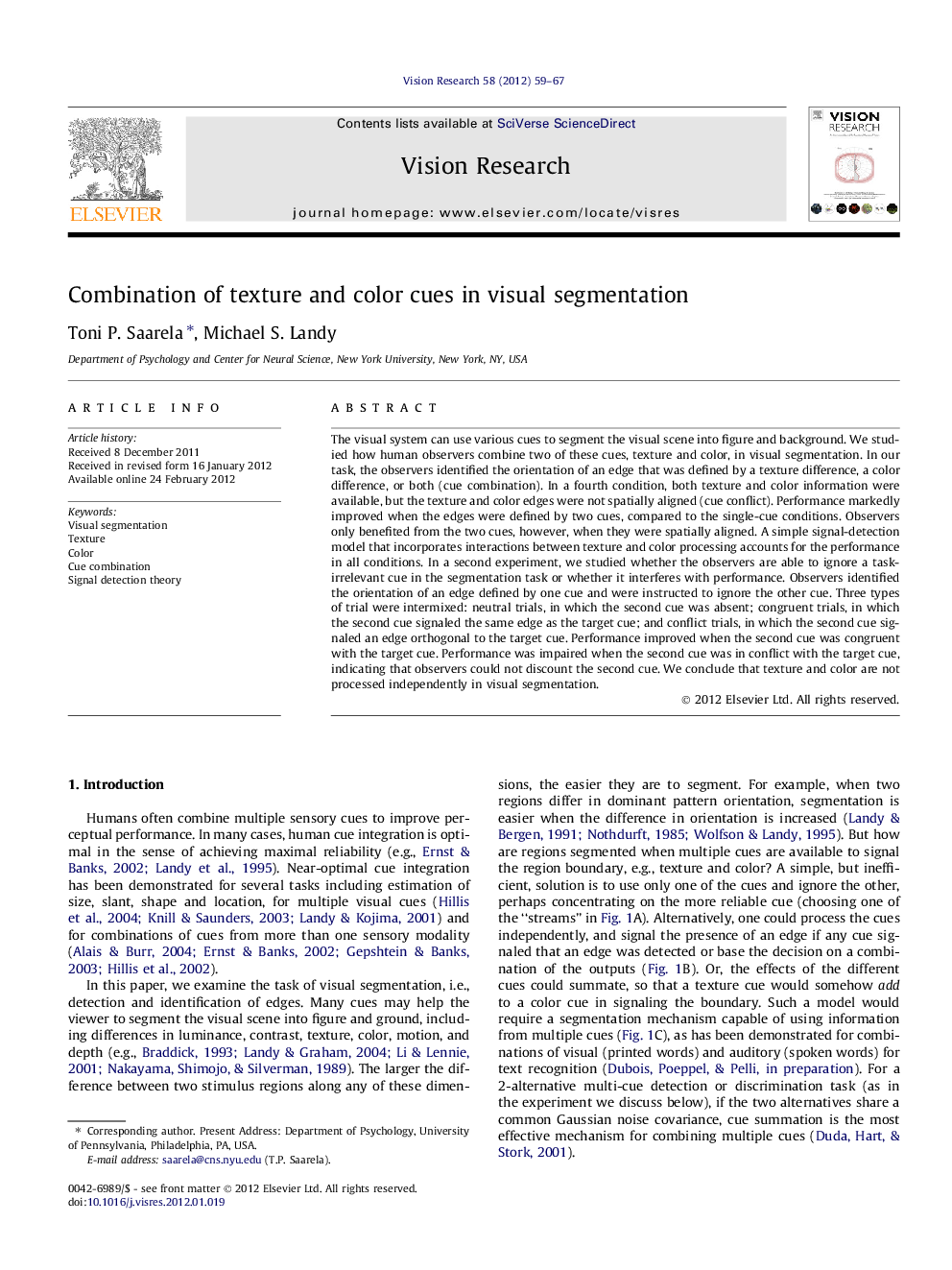| Article ID | Journal | Published Year | Pages | File Type |
|---|---|---|---|---|
| 4034047 | Vision Research | 2012 | 9 Pages |
The visual system can use various cues to segment the visual scene into figure and background. We studied how human observers combine two of these cues, texture and color, in visual segmentation. In our task, the observers identified the orientation of an edge that was defined by a texture difference, a color difference, or both (cue combination). In a fourth condition, both texture and color information were available, but the texture and color edges were not spatially aligned (cue conflict). Performance markedly improved when the edges were defined by two cues, compared to the single-cue conditions. Observers only benefited from the two cues, however, when they were spatially aligned. A simple signal-detection model that incorporates interactions between texture and color processing accounts for the performance in all conditions. In a second experiment, we studied whether the observers are able to ignore a task-irrelevant cue in the segmentation task or whether it interferes with performance. Observers identified the orientation of an edge defined by one cue and were instructed to ignore the other cue. Three types of trial were intermixed: neutral trials, in which the second cue was absent; congruent trials, in which the second cue signaled the same edge as the target cue; and conflict trials, in which the second cue signaled an edge orthogonal to the target cue. Performance improved when the second cue was congruent with the target cue. Performance was impaired when the second cue was in conflict with the target cue, indicating that observers could not discount the second cue. We conclude that texture and color are not processed independently in visual segmentation.
► Observers segmented stimuli cued by 2nd-order texture, color or both. ► Texture and color are integrated for segmentation, leading to improved performance when the cues are consistent. ► Texture and color are not processed independently; subjects cannot ignore one cue while judging the other.
